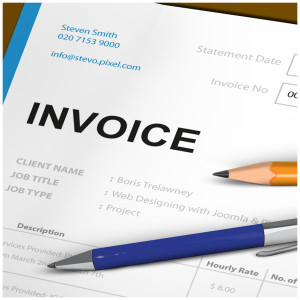6 Steps to Boost Cash Flow
SUCCESS Rieva Lesonsky
Originally published November 2014
 Money makes the world go ’round. Here’s how to make sure you’re hanging onto enough of it to maintain and grow your business.
Money makes the world go ’round. Here’s how to make sure you’re hanging onto enough of it to maintain and grow your business.
Whether you own a one-person business or a corporation with multiple locations and dozens of employees, staying on top of your business’s cash flow is crucial to success. Simply put, cash flow refers to the income and outgo of your business’s cash. Just as with your personal checking account, falling short of funds for necessary expenses can leave you in a world of hurt.
By monitoring and managing your flow, however, you can make sure your business has enough cash on hand to meet expenses and that you have enough extra money to invest in growing your business. Here’s how:
1. Begin with the basics.
To get a grip on your cash flow, start by learning the basics of accounting. Even if you have an accountant or bookkeeper handling your day-to-day finances and billing, it’s important to understand general accounting principles and how they apply to your operations. Your local Small Business Development Center and SCORE (Service Corps of Retired Executives) office offer classes and one-on-one instruction in small-business accounting; you can also investigate courses at your local community college or adult education programs.
an accountant or bookkeeper handling your day-to-day finances and billing, it’s important to understand general accounting principles and how they apply to your operations. Your local Small Business Development Center and SCORE (Service Corps of Retired Executives) office offer classes and one-on-one instruction in small-business accounting; you can also investigate courses at your local community college or adult education programs.
Simplify money management by choosing accounting software that lets you easily monitor your cash flow and generate financial reports. Pick a program that integrates with your bank account so you can see your up-to-the-minute financial position. Products to consider include QuickBooks Online, Xero, Sage One, FreshBooks, FreeAgent and Kashoo.
2. Get a business line of credit.
If your business has seasonal peaks and valleys or if you regularly need capital to purchas e inventory or materials to fill orders, a business line of credit can help ensure you always have the necessary cash to meet your needs. Lines of credit are intended to provide short-term working capital, not to buy real estate, equipment or other long-term assets.
e inventory or materials to fill orders, a business line of credit can help ensure you always have the necessary cash to meet your needs. Lines of credit are intended to provide short-term working capital, not to buy real estate, equipment or other long-term assets.
Because you’ll need to show positive cash flow to get a line of credit, the time to apply for one is before you need it. If you want an unsecured line of credit (that is, if you don’t want to put up collateral), you’ll need good cash flow, an excellent financial track record and several sources of repayment.
Business lines of credit are available from banks, but you can also approach alternative sources such as Kabbage, Swift Capital or Advance Funds Network, all of which use a simple online application to help connect small-business owners with unsecured lines of credit.
3. Get a merchant account to accept credit cards.
If your business doesn’t already accept payment by credit card, establishing a merchant account is a smart move to improve your cash flow. Yes, you will pay fees to accept Visa, MasterCard and the like, but depositing funds into your bank account immediately is worth the trade-off.
Getting paid faster isn’t the only benefit of accepting credit cards. Taking plastic ensures you don’t lose a sale because the customer doesn’t have cash (millennials often carry none at all); it also protects you from the risk of bad checks and makes your business appear legitimate in customers’ eyes. Business-to-business companies can also benefit from accepting credit cards. Many times you will be paid faster and with less red tape if buyers can simply use their corporate credit cards to pay your invoice.
When choosing a credit card processor, look for a company that accepts all major credit and debit cards, complies with payment-card-industry data security standards—meaning the company can be trusted to protect your customers’ financial data—and also offers address verification, real-time processing, Secure Socket Layer (SSL) encryption and card verification value (CVV) to discourage fraud.
If your volume of credit card transactions is likely to be small, using mobile-payment services could be more cost-effective. Mobile payment solutions use a small “dongle” that attaches to your smartphone or tablet computer to swipe cards. Square, Intuit GoPayment are popular solutions that require no long-term commitment and charge fees of about 2.7 percent per transaction. Now there are even mobile phone apps that have this capability so do your homework and research what is best for your business.
4. Invoice immediately.
Do you wait until the end of the month to send i nvoices? Do you sometimes forget to send invoices? Surprisingly, many small-business owners let billing slip through the cracks. Invoicing is the foundation of good cash flow.
nvoices? Do you sometimes forget to send invoices? Surprisingly, many small-business owners let billing slip through the cracks. Invoicing is the foundation of good cash flow.
That’s why it’s important to invoice as soon as you can. Unless your agreement with a client specifies otherwise, turn in a bill right away when a service is completed or a product is delivered. Use your accounting software to automate invoicing and remind you when to create and send invoices. Speed up the process even more by emailing your invoices instead of mailing them and by setting up online payment options.
Before sending an invoice, make sure you get the name of the specific person to send it to, as well as her department, physical address, email address and phone number. Also make your invoices as clear and easy to read as possible. Key information, such as the amount due, date due and how to remit payment, should be easy to see at a glance.
5. Perfect payables and receivables.
Keep your cash flowing upstream by wisely managing both your accounts receivable (what’s owed to you) and accounts payable (what you owe others). In general, your goal should be to accelerate receivables and defer payables. In other words, get paid faster and pay others more slowly.
The first step in getting paid faster is invoicing correctly and on time, as discussed above. Equally important is following up right away when payments aren’t received on time.
Depending on your profit margins and cash flow needs, it may be worthwhile to offer discounts for early payments or for cash payments. Conversely, your contracts should inform customers that late payments will incur interest and/or fines.
At the same time, figure out how late you can pay your bills without incurring fines or late fees or damaging your business’s credit. Setting up recurring payments on a certain date of the month and paying bills online are good ways to safely pay at the last minute.
6. Get a business credit card.
Business credit cards help you manage expenses and handle cash-flow emergencies. They enable you to make business purchases without using your personal credit cards, which is important for both establishing a business credit rating and protecting your personal credit. If you have employees, issuing business credit cards to them is an excellent way to limit, track and monitor their spending. A bonus: Many business credit cards offer rewards such as travel points or upgrades, or points that can be used to make purchases at office supply stores.
When shopping for the business credit card that’s right for you, consider interest rates (not just the introductory rate, but ongoing rates and whether rates are fixed or variable), credit limits, late fees and penalties, rewards, and annual fees.
www.successgenie.com



